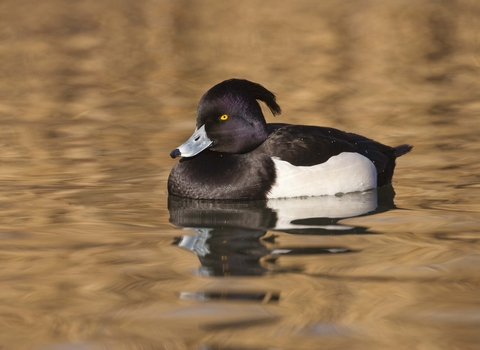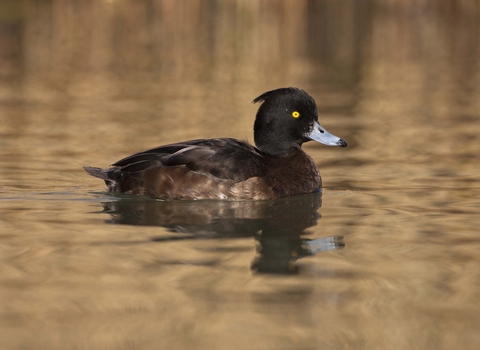
©Guy Edwardes/2020VISION

©Guy Edwardes/2020VISION
Tufted duck
This comical little duck lives up to its name – look out for the black tuft of feathers on its head!
Scientific name
Aythya fuligulaWhen to see
January to DecemberSpecies information
Category
Statistics
Length: 41-45cmWingspan: 70cm
Weight: 760g
Average lifespan: 4 years
Classified in the UK as Green under the Birds of Conservation Concern 5: the Red List for Birds (2021). Protected in the UK under the Wildlife and Countryside Act, 1981.
Habitats
About
Rocking an incredible hairdo, this is our most common diving duck nesting on flooded gravel pits, lakes and reservoirs. Tufted ducks feed on waterweed, plant seeds and water insects. Like most ducks, the 'drake' (male) has nothing to do with the incubation of the eggs or raising the young. The 'hen' (female) has eight to eleven eggs in a brood; the young becoming independent once their true feathers have fledged.How to identify
The tufted duck is very distinctive: the female is entirely chocolate-brown, while the male is black with white flanks and a long tuft at the back of the head.Distribution
Found throughout the country, on lakes, reservoirs and flooded gravel pits.Did you know?
The scientific name of the tufted duck, fuligula, means 'sooty throat'. Like most ducks, the 'drake' (male) has nothing to do with the incubation of the eggs or raising the young. The 'hen' (female) has eight to eleven eggs in a brood; the young becoming independent once their true feathers have fledged.Watch
Tufted Ducks (https://vimeo.com/453699046)
Tufted Ducks by John Bridges
